Wie viele Jungs haben Anna geküsst? Zum besonderen Status von V2-Relativsätzen im gesprochenen Deutsch
DOI:
https://doi.org/10.13092/lo.67.1599Abstract
The aim of the present paper is twofold: first, to introduce the problem represented by socalled "Verb-Second (V2) relative clauses" in German, a phenomenon which occurs exclusively in spoken language, thereby recapitulating the arguments put forth in the literature for their paratactic categorization in light of Den Besten's (1983) assumptions on the structural properties of V2 (e.g. Gärtner 2001, 2002; Den Dikken 2005; Endriss/Gärtner 2005); in the second place, to propose an alternative analysis based on the following postulates: (i) such constructions, which are generally classified as belonging to "noncanonical" phenomena of spoken German, are neither to be ascribed to a deficient syntactic planning nor can they be defined as "false relatives" (cf. Ravetto 2006), but are rather part of a specific syntactic pattern with speaker-oriented implications that is directly related to the syntax-speaker's attitude interface; (ii) these structures display features shared by both asyndetically coordinated clauses (e.g. their word-order and, in principle, the surface form of the d-element introducing them) and standard relative constructions, but a paratactic analysis in classical terms (namely one in which it is assumed that clause1 and clause2 are two conjuncts of a coordinative pattern playing the same syntactic role) does not explain most of the distributional properties that "V2 relative clauses" exhibit. The conclusions of the analysis proposed in this paper rest upon evidence of prosodic, syntactic and semantic-pragmatic nature.Downloads
Download-Daten sind nocht nicht verfügbar.
Veröffentlicht
2014-09-26
Ausgabe
Rubrik
Artikel/Articles
Zitationsvorschlag
Catasso, N. (2014). Wie viele Jungs haben Anna geküsst? Zum besonderen Status von V2-Relativsätzen im gesprochenen Deutsch. Linguistik Online, 67(5). https://doi.org/10.13092/lo.67.1599


